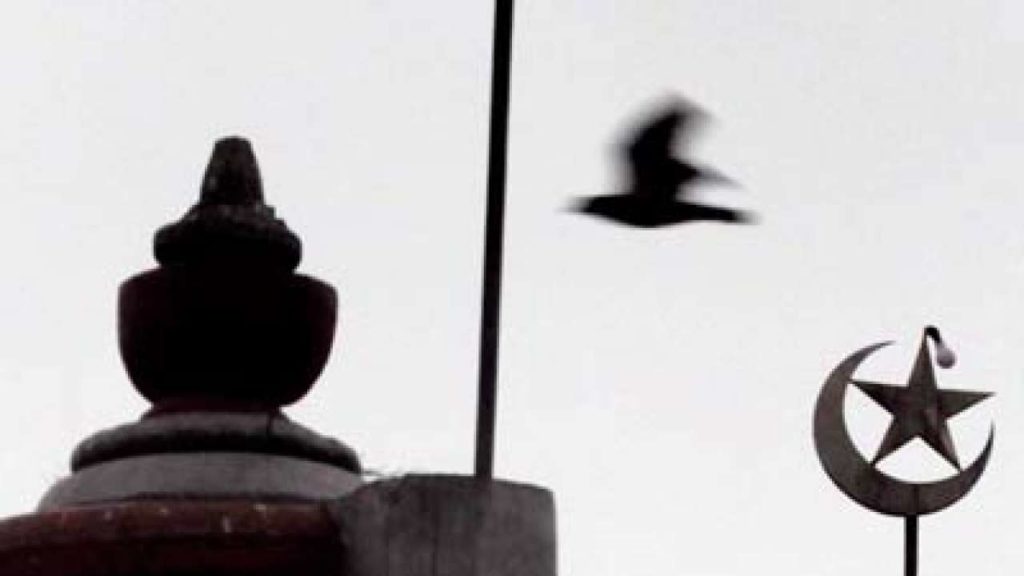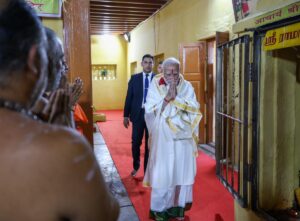Ishmeet Nagpal
Delhi has historically been a prime example of the Ganga–Jamuna or Ganga–Jamuni Tehzeeb; with its iconic Khariboli language (a mixture of local dialects), being home to the literary and music traditions of the North India region, and being the birthplace of Qawwali and the Delhi Gharana. Today, Delhi is the epicentre of divisive politics and the rising resistance against it by the populace in a bid to preserve communal harmony and secularism. Ganga–Jamuni Tehzeeb is apparent in the core values of the people coming together in the nation’s capital today.
The tradition has been passed down through generations by the residents of the Doab (means land between two rivers, in this case, the land between Ganga and Yamuna/Jamuna) region of the central plains of North India, which has long witnessed a syncretic fusion of Hindu and Muslim religious and cultural elements. The term Ganga–Jamuni Tehzeeb originates from an Awadhi poetic phrase as the Nawabs of Awadh were the fore-runners of this culture, propagating the practices in central Uttar Pradesh from Awadh to Prayagraj (erstwhile Allahabad), Lucknow, Kanpur, Faizabad, Varanasi, and Ayodhya.
There are many historic stories in the folklore of this region that describe syncretic and synergistic practices. One such story is about the reason behind a silver crescent moon perched on top of a Hanuman Temple in Aliganj, Lucknow. It is said the crescent was presented to the temple as a token of gratitude by the Queen of Awadh. Her son fell ill and no one was able to cure him. She went to ‘Hanuman Lalla’ to pray for a miracle. Her son survived and she donated the crescent made of silver to the Hanuman temple.
Secularism
Ganga–Jamuni Tehzeeb also traces back to the Bhakti Movement when Hindu, Muslim, Buddhist, Jain and Sikh saints propagated similar ideas of spirituality beyond religious norms, giving the Doab area a cohesive regional identity rather than a personal religious identification. When Bhagat Kabir sang, “Chadariya bheeni re bheeni, re Raam naam ras bheeni”, alluding to how his soul is soaked in Bhakti ras of Raam’s name, his spiritual expression of devotion to a Hindu God was never a conflict with the fact that he was born as a Muslim. Bhakti poetry and Sufism was beyond such definitions and divisions. The composite multiculturalism that this movement cultivated is one of the core ideas of India as a secular nation even today.
Kabirpanthi weavers of Chhatisgarh still sing Kabir’s dohas (couplets) to the tune of the loom. The famous carpets woven in Kashmir by Muslim kaarigars (skilled weavers) embroider images of Goddesses Durga, Lakshmi, and Sarawati on their handlooms. The influence comes partially from the erstwhile interactions with their Kashmiri Pandit neighbours and partly from the weavers who may have migrated there for work from the Doab region. The stories of these weaving traditions are bittersweet in light of the tragedies both Kashmiri Pandits and Muslim residents of Kashmir have endured over the past decades.
In Varanasi and Bengal, the Muslim weavers integrate Hindu iconography like the lotus motif into their designs. Locally known as ‘booti’ (meaning small plant/leaf/flower), the design is a must on the famous Banarasi sarees.
The travelling Patua Chitrakars, who are also predominantly Muslims, have long carried the tradition of storytelling in West Bengal, using painted scrolls to tell stories from Hindu epics as well as tales of Sufi saints. Durga Puja and Dussehra witness Muslim artisans making the Hindu idols while people of Lucknow come together to observe Muharram regardless of their religion.
The shared identity of this region is also evident in the cuisine. Varanasi is popular as the holy city for Hindus but few people know about its rich culinary tradition with raan-musallam, murgh-musallam, machhli-dum, and biriyani, served on the same table as Matar-ka-nimona (a traditional vegetarian curry) and khoya-matar-makhana (curry made with green peas and fox nuts).
In Lucknow, the very architecture and structure of the city speaks to a shared influence of Mughal era as well as Hindu tradition. Ganga–Jamuni Tehzeeb is ingrained into the people’s lives, yet radicalisation and divisive politics are quick to dismiss the existence of this brotherhood or attack it.
In 1920, Lala Lajpat Rai said, “The Indian nation, such as it is or such as we intend to build, neither is nor will be exclusively Hindu, Muslim, Sikh or Christian. It will be each and all.” The time of reckoning is here, with reports of targeted violence from Delhi getting increasingly alarming as on February 24, 2020, even as Donald Trump visits the most imposing Mughal architectural landmark Taj Mahal a few hundred kilometres away. In this moment of turmoil, each tenet of communal harmony is precious. Traditions like Ganga–Jamuni Tehzeeb deserve to be discussed, celebrated, and preserved.
(Ishmeet Nagpal is a social activist, poet, theatre artist and writer. She works as Communications Manager at Save The Children India in Mumbai. She writes for SabrangIndia.com.)




